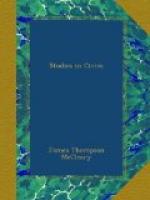Procedure in case a Will has been made.—The proceedings of a probate court have in view two chief objects, namely, to pay the debts of the deceased and to distribute the remainder of his property among those entitled to it. In case the deceased has left a will, the proceedings are as follows:
1. Petition for probate. Within a short time, usually thirty days, after the death of the testator, the executor or other custodian of the will presents it to the probate court with a petition that it be admitted to probate. (For form of petition, see p. 286.)
2. Citation to persons interested. Acting on the petition, the probate judge publishes in a newspaper a notice to all persons interested in the estate that at a specified time, action will be taken on the petition. To afford all who are interested an opportunity to be present at the “hearing,” the notice must be published for a prescribed time, and in some states each of the heirs must, if possible, be personally notified.
3. Hearing the proofs. At the time specified in the notice, unless postponement be granted for cause, the proofs of the validity of the will are presented. It must be shown that the testator is dead, that the instrument was executed by him voluntarily, in the manner prescribed by statute, and while he was of “sound mind and disposing memory.” Usually it will be sufficient for the two witnesses to the instrument to appear and testify to the material facts. If any one interested in the distribution of the property thinks that this will should not be accepted as the “last will and testament” of the deceased, he should now enter objections. In case of a contest, the proceedings are about the same as those in a justice or circuit court; but there is no jury in the probate court, nor is there any plea except the petition.
4. Admission to probate. If the proofs are satisfactory to the court, the will is “admitted to probate,” that is, it is accepted as true and valid. Its validity is established by a decree of the court, and a certificate of the fact is attached to the will. A copy of the will is made in a book kept for the purpose. The original and all the papers in the case are filed and preserved by the judge of probate. (See pp. 287 and 288.)
5. Issuance of letters testamentary. The genuineness of the will being established, it is now in order to carry out its provisions. Usually the testator designates in his will the person or persons whom he wishes to act as his representative in the settlement of the estate. Such a person is called an “executor.” If no person is so named, the court appoints an “administrator with the will annexed.” In either case the person derives his authority from the court. Unless excused in the will, the executor or administrator is required to give bonds proportioned to the amount of the personal property in the estate, the amount of bond being specified by the court. The executor is then furnished with a copy of the will and with “letters testamentary.” (The authority granted by the letters may be seen by reference to the form in the appendix, p. 288.)




